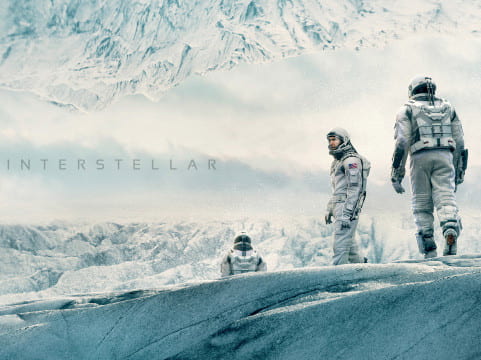CHAD CARTER – STAFF WRITER
Christopher Nolan’s new movie Interstellar has generated a lot of buzz. Nolan is the director of many successful films of the last 15 years, including Momento (2000), The Dark Knight trilogy (2005-2012), and Inception (2010).
His newest project Interstellar has a star-studded cast, with Matthew McConaughey, Michael Caine, Anne Hathaway, and John Lithgow. The film looks to be another success, scoring 9/10 on IMDb and 74 percent on Rotten Tomatoes. The movie tells of a dying Earth and group of explorers who traverse a wormhole to find a new location for human life.
Like many Nolan movies, Interstellar is thought-provoking.
“The plot is complicated; it’s a film that demands thinking. Nolan is somebody who’s going to search for some ambiguity, some complication, he’s going to want to make you think about it. It’s not going to give an easy answer,” Director of Film Studies and Assistant Professor of English Dr. Stacey Peebles said.

The movie highlights the relationship between Cooper (McConaughey) and his ten-year-old daughter Murph (Makenzie Foy). When Cooper blasts off to space, Murph is left behind.
Junior Daniel Graham was critical of the portrayal of this relationship.
“The worst part of the movie was how Nolan handled the theme of love. It seemed a little forced, and out of left field. That said, it was not a major distraction or even that out of place,” Graham said.
While known for his stunning visual effects, Nolan has been criticized for his treatment of human relationships in previous films.
But even if the execution was slightly clumsy, the fact that Nolan placed this relationship at the center of such a film is admirable.
“I like the dynamic of how relationships supersede everything else,” first-year Max Addington said.
When this relationship is combined with wormholes and spaceships and Matthew McConaughey, Interstellar has a lot to offer. “Nolan gives us human relationships and things we recognize with what promises to be some pretty weird stuff,” Dr. Peebles said.
That “weird stuff,” unlike in many movies, was extensively researched and relatively scientifically sound. Undoubtedly, this film is science fiction, but Nolan worked hard to keep the fiction at a minimum.
“They had an actual astrophysicist working on set helping them with the visuals for the black hole to be as realistic as possible,” Graham said. “If you like science, you should see it. The fact that this movie was 90 percent scientists or science was awesome.”
This silver screen manifestation of real science could be inspiring to the scientifically-minded. “It made me rethink my major, seeing how practical and essential physics is to our survival. It was really cool seeing science in action rather than out of a textbook,” Addington said.
In the movie, science represents the potential of the human race to save itself from itself.
“You don’t really see that sentiment much. This idea of human ambition, of not trying to fix the messes we’ve made for ourselves, but to really reach for something great. To me what’s striking is that very sincere statement about human potential, there’s a sincerity there that you don’t really see too often,” Dr. Peebles said.
The movie definitely makes a convincing case for what humans can do when we put our minds to it. But the message of the movie was more than that.
“It was incredibly ambitious, seeking to address relativity, our place in the universe, human nature, artificial intelligence, and the powerful bonds we form with those we love. I can’t remember the last time a movie even attempted to handle as many themes of such great importance and even for that reason alone I was excited to see it,” Graham said. “I think Nolan was able to incorporate these elements very elegantly.”
Human relationships, human potential, and deep space are all well explored in Interstellar, and there will certainly be much debate over how well the movie portrays them.
This movie, however, represents another debate in the world of cinematography, the debate between film and digital cinematography.
Until recently, celluloid film was the dominant medium for movies. Now it has been widely replaced by digital, to the point that a major movie playing on film is rare.
Nolan is a staunch advocate for film, and Interstellar is playing on film in some theaters.
Film advocates argue “that even in an age where digital technology has advanced really far, there’s something about film that still captures a depth of image and color and texture that you cannot get if you’re just working with digital,” Dr. Peebles said.
Digital advocates maintain that the ease of use and relatively low cost of digital equipment democratizes the filmmaking process, allowing people with smaller budgets and less experience to still create high quality cinematography.
“You can work more freely, you can work more innovatively, you can see what you’re shooting. You can’t do that with film,” Dr. Peebles said. “Even though audiences won’t be aware of the difference, for people in the industry, it’s a big difference.” Regardless of the beliefs of both sides of this argument, digital has taken over, and the future of film is uncertain at best. “Interstellar could be one of the last movies that you could see on film.”
All in all, there’s a lot to like about this movie. It’s got space travel, science, wormholes, family bonds, various themes, and Anne Hathaway. And in an age of cinema where science fiction is more likely to mean awesome explosions than character development, Christopher Nolan has created yet another excellent film, and you should probably go see it before somebody spoils the ending.
